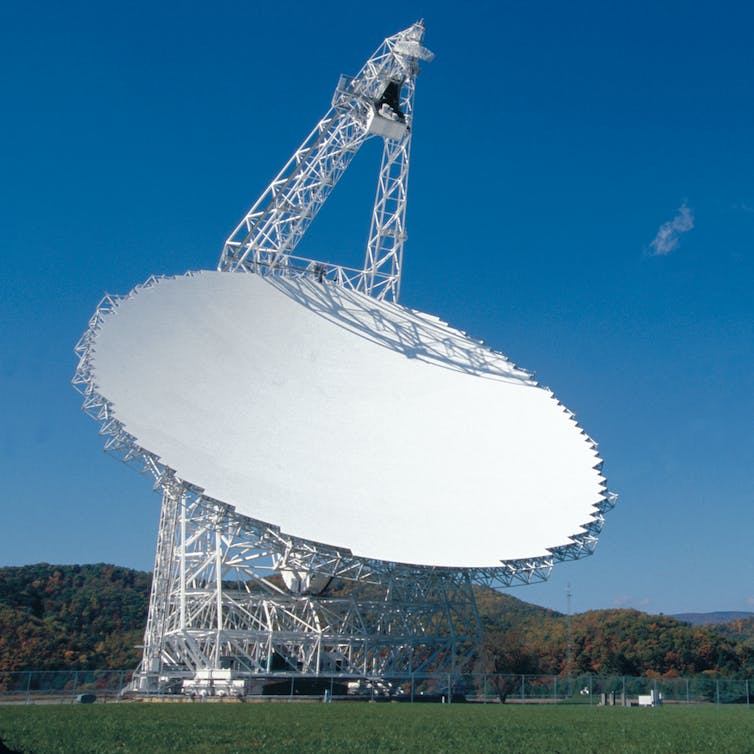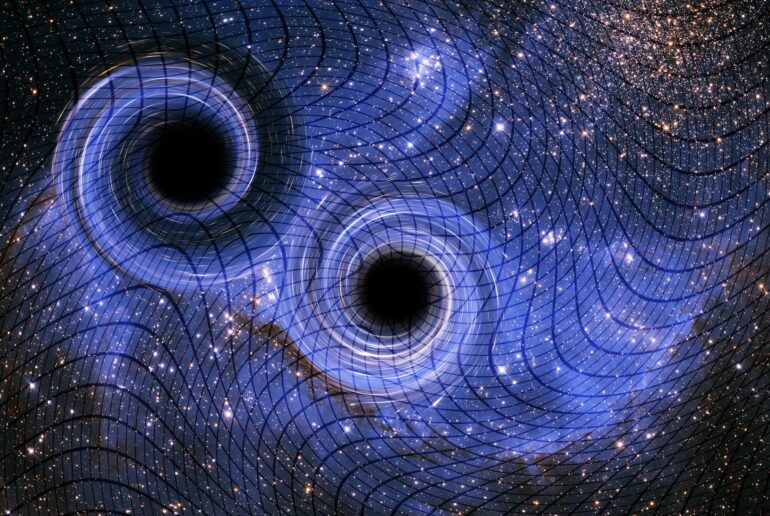An international team of astronomers has detected a faint signal of gravitational waves reverberating through the universe. By using dead stars as a giant network of gravitational wave detectors, the collaboration – called NANOGrav – was able to measure a low-frequency hum from a chorus of ripples of spacetime.
I’m an astronomer who studies and has written about cosmology, black holes and exoplanets. I’ve researched the evolution of supermassive black holes using the Hubble Space telescope.
Though members of the team behind this new discovery aren’t yet certain, they strongly suspect that the background hum of gravitational waves they measured was caused by countless ancient merging events of supermassive black holes.
Pulsars are spinning dead stars that emit strong beams of radiation and can be used as accurate cosmic clocks.
Using dead stars for cosmology
Gravitational waves are ripples in spacetime caused by massive accelerating objects. Albert Einstein predicted their existence in his general theory of relativity, in which he hypothesized that when a gravitational wave passes through space, it makes the space shrink then expand periodically.
Researchers first detected direct evidence of gravitational waves in 2015, when the Laser Interferometer Gravitational-Wave Observatory, known as LIGO, picked up a signal from a pair of merging black holes that had traveled 1.3 billion light-years to reach Earth.
The NANOGrav collaboration is also trying to detect spacetime ripples, but on an interstellar scale. The team used pulsars, rapidly spinning dead stars that emit a beam of radio emissions. Pulsars are functionally similar to a lighthouse – as they spin, their beams can sweep across the Earth at regular intervals.
The NANOGrav team used pulsars that rotate incredibly fast – up to 1,000 times per second – and these pulses can be timed like the ticking of an extremely accurate cosmic clock. As gravitational waves sweep past a pulsar at the speed of light, the waves will very slightly expand and contract the distance between the pulsar and the Earth, ever so slightly changing the time between the ticks.
Pulsars are such accurate clocks that it is possible to measure their ticking with an accuracy to within 100 nanoseconds. That lets astronomers calculate the distance between a pulsar and Earth to within 100 feet (30 meters). Gravitational waves change the distance between these pulsars and Earth by tens of miles, making pulsars easily sensitive enough to detect this effect.

The NANOGrav team used a number of radio telescopes, including the Green Bank Telescope in West Virginia, to listen to pulsars for 15 years.
NRAO/AUI/NSF, CC BY
Finding a hum within cacophony
The first thing the NANOGrav team had to do was control for the noise in its cosmic gravitational wave detector. This included noise in the radio…



